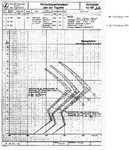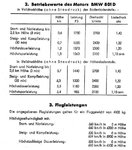Reading recently about the Fw-190As, one thing from the manual for the A-5/A-6 popped out as interesting: the A-5/A-6 were as fast, on about the same HP, on same altitude, as Spitfire MkV (Fw using the Max continous rating, 1180 PS) or Spitfire Mk.VIII/IX (Fw using the Emergency rating, 1440 PS). I wonder why the Spitfire was not faster, being powered by the V-12 (= inherently less drag)? Was it because of it's bigger wings, or the fixed tail wheel messed things in Mk. V/IX case (but still the Mk.VIII cannot come ahead, despite the retractable tail wheel), was it because the radiator(s) were draggy, or all parts played about the equal part? IIRC the Spitfire having thinner wing (someone with knowledge can chip in here, too), to offset the total wing drag? The Fw-190A-5 was also far heavier, especially vs. the Mk.V.
The chart can be found at Williams' site, the red dot represent's Mk.V's best value. The pink dot represents Mk.VIII/IX, 404 mph at 21000 ft (Merlin 66 aboard); the hi-alt versions of Merlin were able to propel the Spit at thinner air (less drag = more speed), but obviously they cannot be compared here. Maybe with the D-9.
The 'slower' lines of the Fw's speed are the one of interest (= with compressibility taken into account).
The chart can be found at Williams' site, the red dot represent's Mk.V's best value. The pink dot represents Mk.VIII/IX, 404 mph at 21000 ft (Merlin 66 aboard); the hi-alt versions of Merlin were able to propel the Spit at thinner air (less drag = more speed), but obviously they cannot be compared here. Maybe with the D-9.
The 'slower' lines of the Fw's speed are the one of interest (= with compressibility taken into account).


